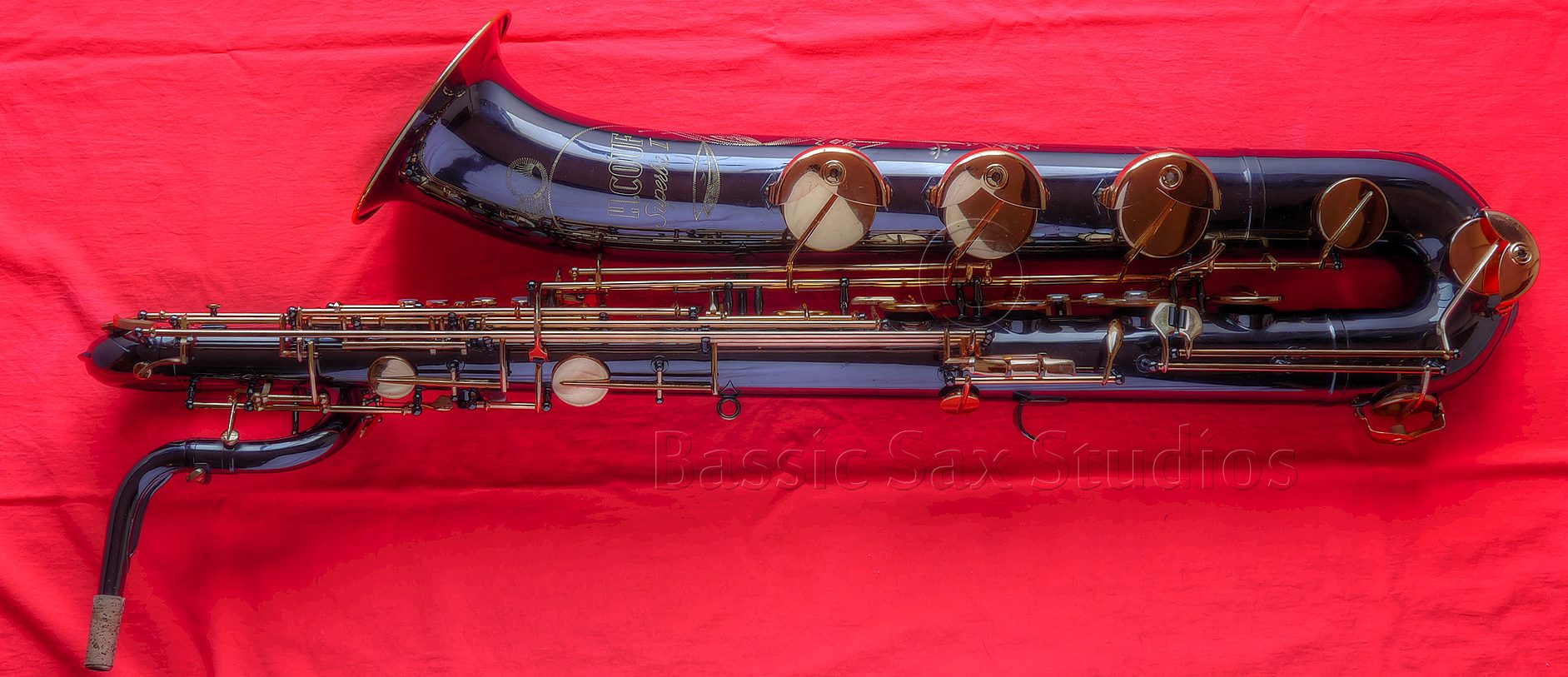What really are the differences between the Superba I and Superba II Couf soprano saxophones? The short answer is not as much as you might think, and it all depends on when it was made. H. Couf sopranos underwent some pretty significant changes over the approximately 22 years that they were produced.
A quick disclaimer
This page is a work in progress. In some cases the sample sizes that I have been able to gather to date are so small, that I haven’t been able to conclusively draw any conclusions. Over time, my hope is fill in the missing blanks. If you can help in some way, please do not hesitate to drop me a note. Thanks!
What does the term “intermediate” mean in Couf speak?
Herb Couf said:
There were three levels of H. Couf saxophones; Superba I, the professional line…. Superba II the intermediate line with many of the same features as the Superba I…1
That said, “intermediate” does not mean inferior, and not up to pro standards. The Superba II were built to the same level of precision that their Superba I cousins were. All intermediate means in this case, is that a few minor things were different. (Much like the only difference between JK’s pro and intermediate Toneking and The New King was the presence and absence of a high F# key.)
With all that in mind, it’s time to take a closer look at what makes a I a I, and a II a II.
Superba I Soprano
Features common over the entire production run
Phase 1 – features
- Flat left palm keys & in-line tone holes for high D, Eb, & F (Mark VI-like)
- Bell keys located on the top of the bell
- LH table keys are on 1 post—which necessitate the top of bell, bell key design
- JK-styled RH pinkie keys
- Button-shaped chromatic F#
- Latest (only) serial # seen to date: 76915
Phase 2 – features
- MOP G# key touch
- Arched palm keys with high D, Eb, & F tone holes on the side
- Bell keys located on the top of the bell
- LH table keys are on 1 post—which necessitate the top of bell, bell key design
- JK-styled RH pinkie keys
- High F# key
- Chromatic F# key sliver-shaped
- Right thumb rest fixed metal
- Lyre holder located on the front just above the bell keys
- Circa 1980 the right thumb rest was changed to black plastic with 2 body anchors (first horn that shows this is 84911)
- Circa 1980 a strap ring was added (first horn that shows this is 84911)
- Serial # range seen to date: 81529-88282
Early Phase 2 Couf Superba I Soprano
Later Phase 2 Couf Superba I Soprano
Phase 3 – features
- MOP G# key touch
- Arched palm keys with high D, Eb, & F tone holes on the side
- Bell keys located on the side of the bell
- Change in left pinkie table keys to improve mechanism—which allowed bell keys to be moved to side of body
- Rounder right pinkie keys
- High F# key
- Has a front F key
- The chromatic F# changed to a button shape again
- Right thumb rest black plastic with 2 body anchors
- Strap Ring
- Lyre holder on the back above the right thumb rest
- Latest (only) serial # seen to date: 91912
Superba II Soprano
Features
- Post to body construction
- Straight tone holes
- Hand engraving
- Black plastic left thumb rest
- Black plastic G# key touch
- In-line tone holes for high D, Eb, & F (Mark VI-like)
- Bell keys located on the top of the bell
- LH table keys are on 1 post—which necessitate the top of bell, bell key design
- JK-styled RH pinkie keys
- Chromatic F# key sliver-shaped, not a button
- Fixed metal left thumb rest
- Lyre holder located on the front just above the bell keys
- Serial # range seen to date: 64031 – 7823X
Many thanks go to the following people:
I want to acknowledge the incredible work done by Steve Sklar. Steve has been researching and writing about H. Couf saxophones for years before I came along. By generously allowing me to springboard off his materials, Steve has moved the research on Couf horns forward by years.
Thank you Steve. You are a great colleague, and I very much appreciate and enjoy our work together on the Woodwind Forum!
I also want to thank Brian at Get A Sax, Roberto from Robertos Winds, Mark from USA Horn, as well as Chadd from World Wide Sax, for allowing me to use their images throughout all these H. Couf saxophone pages. Beautiful images are vital to illustrating the beautiful horns that Herb Couf helped the Julius Keilwerth Company design.
__________________________________________________________________________________________________
1 Saxophone: Ein Kompendium, Uwe Ladwig. Second Edition, 2012. p. 59



















































































You must be logged in to post a comment.